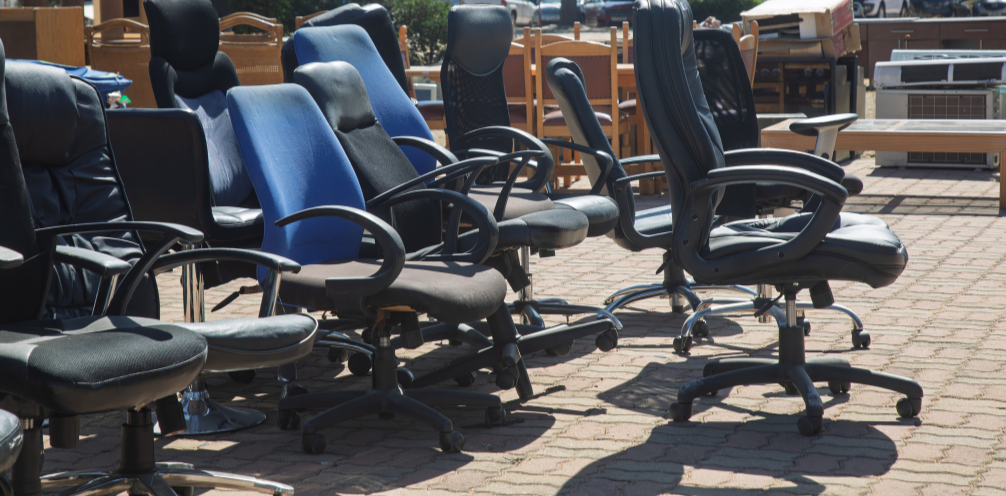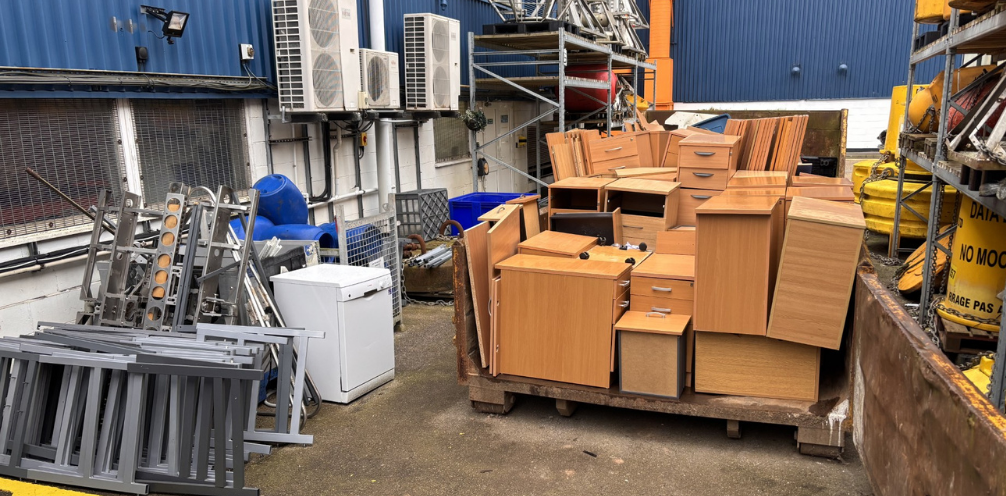An office furniture recycling solution for your workplace
Our eco solutions give your business the chance to be environmentally friendly and uphold your corporate social responsibility.
That's why, we offer an office furniture recycling service, taking the hassle out of disposing of old or broken items and ultimately helping you to reduce your carbon footprint.
The re.think sustainable solutions scheme, provides access to a collection and recycling service for our customers as a simple, sustainable solution for disposing of old or unwanted office furniture at a fraction of the cost usually associated with waste management.
Through the furniture recycling scheme, every item can be avoided from landfill. Collected furniture is returned to the re.think depot, dismantled, sorted, and fully recycled. Each material is separated to maximise recyclability, and re.think manages the entire process for you.
Discover how you can avoid your office furniture going to a landfill site, which materials can be recovered, and what can be processed back into re-usable materials.


You can avoid your office furniture ending up in landfill...
Any of these items are suitable for recycling: Desking and tables, drawer units, task, and conference chairs, soft seating, steel storage, wooden storage, desk dividers and privacy screens.
For efficient recycling, each product is dismantled, and the materials are segregated into the following five groups: Wood, metals, plastics, fabrics and foam.
Below are some examples of what happens to each material recovered: Where possible, materials are then sent to be processed back into raw materials, then reused in the manufacturing of new products.

Your office furniture can be processed back into raw materials...
Wood - Board types are segregated and recycled into other products or used as green energy. Wood can be chipped or shredded and used as mulch or in composite materials. High-quality wood can be reclaimed and reused directly in other furniture or construction projects.
Metals - Metal materials are separated and can be recycled many times over. Metals are sorted by type (e.g. steel, aluminium), cleaned, and melted down. The metals can then be remade into products such as cans and containers, or construction materials.
Plastics - Plastics are identified and seperated according to their unique number, as per the Plastics Industry Association’s coding system, to prevent cross-contamination and the ensuing waste. Next in the process, the plastics are shredded into smaller pieces, melted, and reformed into pellets. The pellets are used to produce new products, including some office furniture components, office supplies, or recycled bottles and containers.
Fabrics - Fabric is segregated into vinyl, synthetic and wool and shredded into fibres. These fibres can be respun into yarn or matted into nonwoven fabrics. They can be used for acoustic panels or as new textiles for upholstery and clothing.
Foam - Foam is returned to our foam supplier on a closed-loop recycle chain, where it's ground into small pieces, rebonded into new foam products, or melted and reformed. It can become cushioning materials for packaging or rebonded foam for furniture cushions.

.png)


.png)
